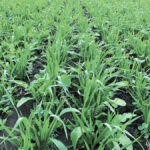Tag Archives soil health

Grain growers share the best equipment changes they’ve made on-farm
Three farmers reveal top agronomic and efficiency improvements on their operations at IFAO conference

Farmers test microbes to nourish crops as climate pressure grows, costs rise
Soil biologicals are getting a lot of attention and research money

Watershed studies trickle down, but slowly
Vermont researchers testing flows from tens of thousands of acres in on-farm research program

ONFARM launches new data dashboard for Ontario soils
Project brings together extensive on-farm research data

Root symbiosis regulated through plant nutrient status
Science Notes: Discovery offers potential to help achieve sustainable agriculture goals

Study clarifies nitrogen impact on carbon sequestration
Science Notes: Why soil organic carbon fails to build in high-input corn fields

Ontario cover crop survey garners most respondents ever
Survey pinpoints potential solutions to encourage cover crop adoption

Canadian company brings carbon-friendly sulphate alternative to market
Byproduct from oil and gas industry offers sustainable fertilizer input

Long-term Ontario studies show value of cover crops
Boosting organic matter in soils proved to boost profit margins and reduce yield variation year to year

Livestock antibiotics, rising temperatures disrupt soil microbial communities
Science Notes: Conditions see soil bacteria collapse, microbial efficiency reduced

